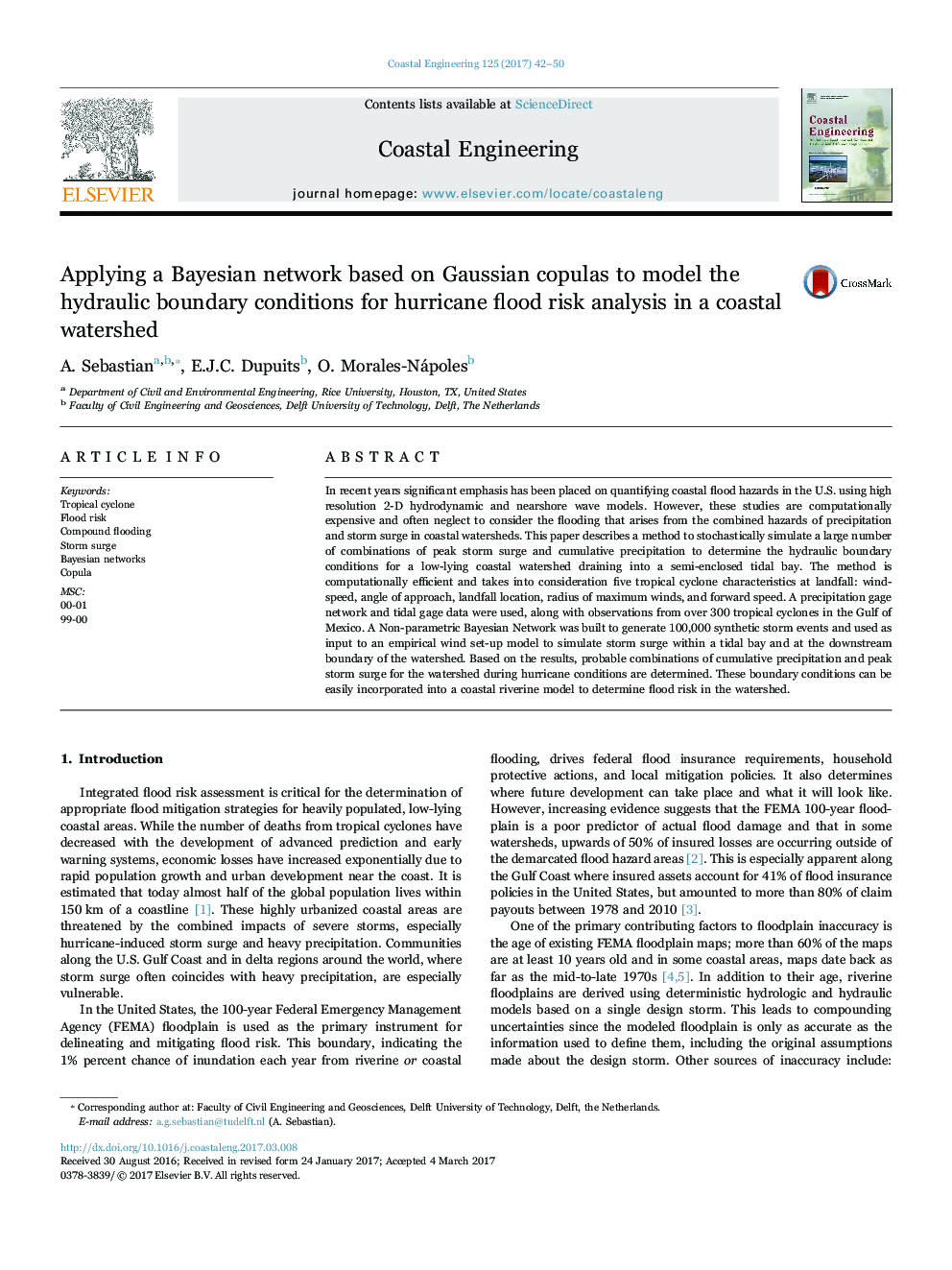| Article ID | Journal | Published Year | Pages | File Type |
|---|---|---|---|---|
| 5473475 | Coastal Engineering | 2017 | 9 Pages |
Abstract
In recent years significant emphasis has been placed on quantifying coastal flood hazards in the U.S. using high resolution 2-D hydrodynamic and nearshore wave models. However, these studies are computationally expensive and often neglect to consider the flooding that arises from the combined hazards of precipitation and storm surge in coastal watersheds. This paper describes a method to stochastically simulate a large number of combinations of peak storm surge and cumulative precipitation to determine the hydraulic boundary conditions for a low-lying coastal watershed draining into a semi-enclosed tidal bay. The method is computationally efficient and takes into consideration five tropical cyclone characteristics at landfall: windspeed, angle of approach, landfall location, radius of maximum winds, and forward speed. A precipitation gage network and tidal gage data were used, along with observations from over 300 tropical cyclones in the Gulf of Mexico. A Non-parametric Bayesian Network was built to generate 100,000 synthetic storm events and used as input to an empirical wind set-up model to simulate storm surge within a tidal bay and at the downstream boundary of the watershed. Based on the results, probable combinations of cumulative precipitation and peak storm surge for the watershed during hurricane conditions are determined. These boundary conditions can be easily incorporated into a coastal riverine model to determine flood risk in the watershed.
Related Topics
Physical Sciences and Engineering
Engineering
Ocean Engineering
Authors
A. Sebastian, E.J.C. Dupuits, O. Morales-Nápoles,
